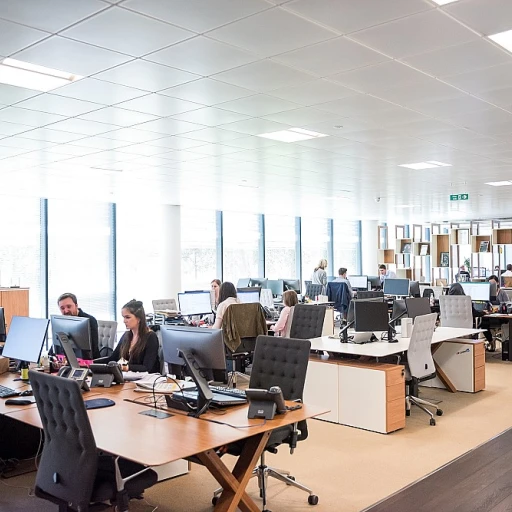
The Evolution of Robot Protocols
Tracing the Journey of Protocols in Robotics
The evolution of robot protocols is intricately linked to the developments in robotics and artificial intelligence. As industries strive towards greater efficiency and automation, the need for sophisticated communication protocols has become paramount. Originally, robots were isolated units with specific tasks. However, in recent years, there has been a significant shift towards integrating robotic systems into existing operations, requiring advanced communication protocols. Robots need to communicate seamlessly, not only amongst themselves but also with human operators and various systems. This shift necessitates the development of communication protocols designed to handle real-time data exchange, ensuring that robots can perform tasks safely and efficiently. In industrial robotics, these protocols enable robots to interact with manufacturing systems, enhancing productivity through coordinated actions. The adoption of robots in industrial automation has placed a spotlight on the need for standardized communication protocols across diverse systems. Protocols such as the "robots.txt" file for web crawlers highlight a broader trend towards establishing clear rules and guidelines, enhancing communication between differently engineered systems. The emergence of the Robot Operating System (ROS) as a flexible framework further underscores the necessity for adaptable communication solutions. Explore how robotic process automation is being shaped by these technological advances in this insightful future of RPA jobs article, which discusses the changing landscape of job dynamics in the era of automation. As we delve deeper into how these communication protocols affect workforce dynamics, the link between evolving technology and the requirement for human workers in engineering and design becomes evident. These protocols are instrumental in creating a cohesive environment where robots and humans can collaborate effectively, paving the way for a future where protocols are the backbone of human-robotic interaction.Impact on Workforce Dynamics
Shifting Dynamics in the Workplace
The introduction of advanced robot communication and protocols is drastically transforming the landscape of workforce dynamics. As robotic systems become more sophisticated, their integration into tasks traditionally performed by humans is increasing. This shift not only challenges conventional job roles but also offers opportunities for enhanced productivity and efficiency.
Robots communicate through a variety of robot communication protocols, allowing seamless interaction with industrial robotics systems. For example, the ROS (Robot Operating System) is a widespread standard that supports complex robotic applications by offering a standard communication interface.
Automation driven by coherent robot operating protocols enables real-time data exchange, optimizing systems and machinery performance. As a consequence, industries like manufacturing and engineering are experiencing significant shifts towards automation – a trend that aligns with insights discussed in the rise of quantum automation in the future of work.
- Robotics and AI Integration: Intelligent robotic systems powered by artificial intelligence enhance decision-making capabilities.
- Robots Exclusion Protocol: Implementing the robots.txt file and user agent specifications ensures effective control and management within data exchange processes.
- Operational Optimization: Improved robot control mechanisms support efficient industrial automation, reducing human error and operational downtime.
The impact of these innovations is profound, affecting not only current job structures but also paving the way for new roles that require domain expertise in robotics protocols and communication systems.
Ethical Considerations and Challenges
Addressing Ethical Concerns in Robotics
In the ever-evolving landscape of robotic systems, ethical considerations emerge as a crucial aspect of the dialogue on the future of work. With robots communicating and exchanging data more fluidly, the implementation of communication protocols becomes indispensable in defining the manner and extent of interactions between robots and humans. These protocols, often manifesting as guidelines encoded in robotics systems, dictate how robots operate and respond to human commands. The challenge arises in ensuring that these protocols respect human autonomy and privacy while maximizing the potential benefits of increased automation. For instance, the robot exclusion protocol and robots.txt are examples of systems aimed at protecting user privacy, limiting how robots access certain information in web spaces. Another ethical dimension involves the handling of data. As robotic systems collect vast amounts of personal and sensitive information, it is vital to establish robust systems to govern how this data is stored, processed, and shared. Ensuring data integrity and user confidentiality requires rigorous control mechanisms and transparent data exchange policies. Moreover, robotic communication systems must adhere to established laws and societal norms to avoid potential misuse. By integrating artificial intelligence and machine learning into robot operating systems, there is a risk of unintended consequences, making it essential to align these innovations with ethical frameworks. The "https://www.future-of-work.net/blog/exploring-the-future-of-work-with-lorawan-live" wide range of applications within industrial robotics highlights not only the technological prowess but also the responsibility that comes with ethical adherence. As this field continues to grow, the need for industry-wide consensus on ethical issues becomes more pressing. Collaboration among engineers, designers, policymakers, and stakeholders can foster an environment where robotics advancements support human welfare while addressing challenges like privacy invasion, job displacement, and system biases, thereby ensuring a sustainable future for all involved in robotics and industrial automation.Integration with Human Workers
Cooperative Synergy: The Fusion of Humans and Robots
The interaction between human workers and robots in industrial settings is a dynamic evolution that underscores the importance of communication protocols and systems. As robots become integral to manufacturing and other sectors, refining how they interact with human counterparts enhances operational efficiency and safety. The integration hinges on effective robot communication mechanisms. These systems must support real-time data exchange to optimize robot control in a human-populated work environment. Robot operating systems and communication protocols play significant roles in harmonizing these interactions, ensuring that robotic systems can communicate their tasks, changes, or anomalies seamlessly. Designing ergonomic interfaces and control systems that prioritize human ease of use is crucial. This demands careful engineering of the robotic systems to ensure they align with human cognitive and physical capabilities, fostering an inclusive work environment where humans and robots collaborate. Furthermore, the human element shouldn't be overshadowed by the technology's sophistication. An emphasis on user-friendly design and intuitive control structures upholds the principle that advanced robotic systems serve to augment human abilities, not replace them. Robots communicate through structured interaction protocols that dictate how data is exchanged. These protocols must be adaptable and resilient, capable of evolving with technological advancements and shifting industry needs. The well-established ROS (Robot Operating System) and evolving robotic protocols provide a flexible framework for facilitating this inclusive interaction. In summary, the interplay between robots and human workers is cementing the collaborative potential of tomorrow's workforce. The thoughtful implementation of communication protocols and robot control systems promotes a smooth integration that respects the strengths and limitations of both parties involved.Technological Innovations Driving Change
Technological Innovations Transforming the Landscape
The seamless integration of robots into the workplace necessitates advanced technological innovations, particularly in the realm of communication protocols. These protocols play a pivotal role in ensuring that robots can communicate effectively with one another and with human workers. A significant development in this field is the use of robots txt and other specialized txt files, which help in setting guidelines for robot behavior and data access within a system.
The role of artificial intelligence cannot be overstated in revolutionizing robotic systems. With AI, robots are becoming more adept at real-time decision-making and data exchange, enabling them to execute complex tasks with minimal human intervention. The engineering and design of robot control systems have evolved to incorporate sophisticated algorithms that facilitate better communication and more precise control over robotic actions.
Industrial robotics has particularly benefited from these innovations, with communication protocols like ROS (Robot Operating System) playing a crucial role in standardizing the way robots communicate across different platforms. This standardization ensures that different robotic systems can work together seamlessly, regardless of the manufacturer. Consequently, these improved communication avenues are fostering a more collaborative work environment where humans and robots coexist and collaborate efficiently.
Moreover, the advent of the robots exclusion protocol, often implemented in user agent and other software systems, allows organizations to better control the flow of information between robotic agents and human-operated systems. This control is crucial in maintaining a balance between automation and manual oversight, ensuring that the wide range of data being exchanged does not compromise security or operational integrity.
Technological innovations are undoubtedly the backbone of this robotic revolution. As we look towards the future, these advancements will continue to drive change across industries, reshaping how work is conceptualized and executed. These innovations, grounded in the latest engineering and design practices, are key to preparing for a future where humans and robots collaborate in unprecedented ways.
Preparing for the Future
Strategies for Navigating the Future Landscape
As we observe the shifting landscape fostered by the continued integration of robot protocols and robotics, it's crucial for both individuals and organizations to prepare effectively. A proactive approach allows adaptation to the evolving dynamics of the workforce, influenced by technological advancements and process automation.- Understand Communication Protocols: With the growing need for seamless robot communication, understanding diverse communication protocols becomes essential. Protocols govern how robots communicate data among themselves and with human systems. Familiarity with established communication systems and newer robots txt configurations can provide a competitive edge.
- Embrace Continuous Learning: Continuous education in subjects like robotics, artificial intelligence, and data exchange technology is vital. Courses that cover real-time data manipulation, robot control, and robotic systems design will help bolster your knowledge base and make you adaptable to the interplay between artificial and human agents.
- Explore Automation Tools: Organizations should invest in tools that streamline workflows. Companies looking to integrate automated solutions must stay informed about developments in industrial robotics and robot operating systems, with an eye on user-friendly design. This preparation promotes smoother operational transitions with fewer disruptions.
- Foster Collaborative Environments: As robots and human workers increasingly share workspace, fostering a collaborative environment bridges the gap in human-robot interaction. Prioritizing ethical guidelines ensures a balanced ecosystem. This involves embracing human-centric engineering that respects robotic exclusion protocols and aligns with industrial automation laws.
- Invest in Advanced Technologies: Keeping abreast of technological innovations driving the change, such as advanced sensor systems and real-time data analytics, enables more efficient decision-making processes. Leveraging these advances assures seamless integration within manufacturing operations and a wide range of sectors reliant on robotics engineering.












